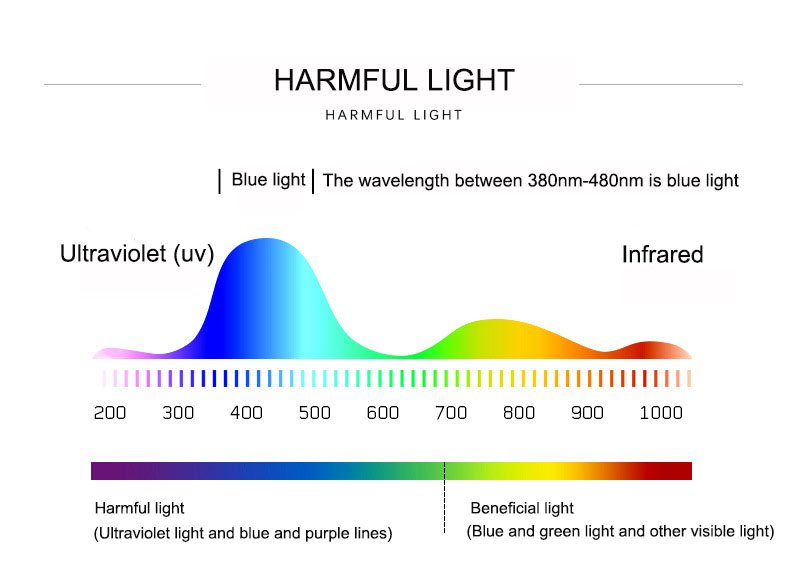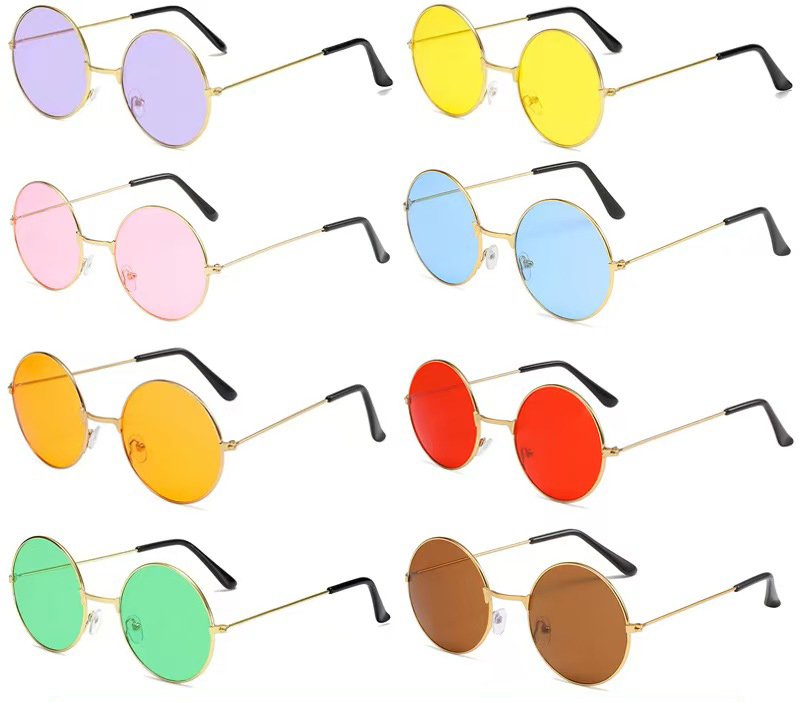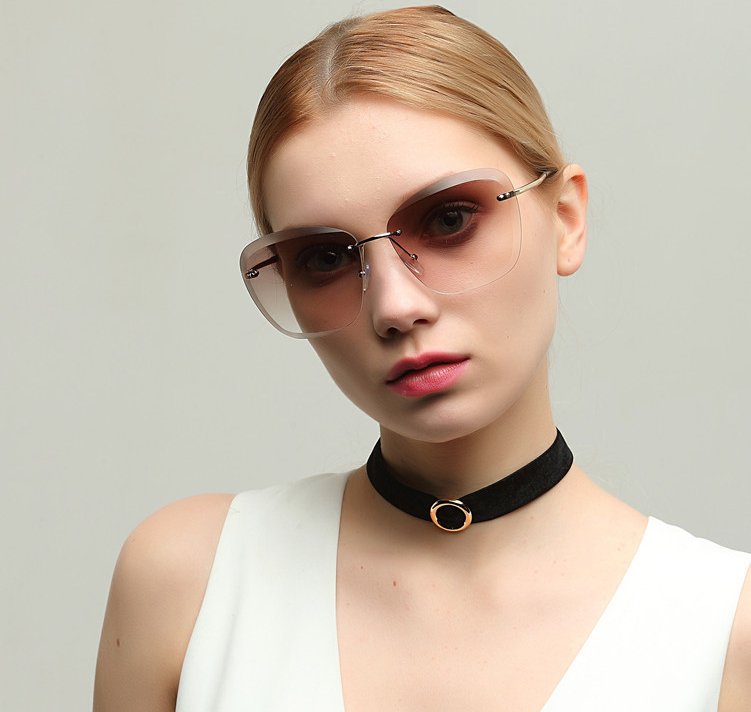Sunglasses have become an essential item in people’s lives. So, how should we choose among the myriad of sunglasses made from different materials and brands? The Fansi Sunglasses remind you: it is necessary to have a pair of sunglasses in summer to protect your eyes from UV damage. However, if you choose a pair of low-quality or substandard sunglasses, they will not only fail to block UV rays but may also cause your pupils to dilate, resulting in your eyes’ lenses absorbing more UV light. Therefore, sunglasses must balance both health and decorative functions. So, what should you pay attention to how to choose sunglasses?
Purposes for using sunglasses
If the summer sunlight is too harsh, they will think about what will happen if they are abused and burned by the eyes, for the high ultraviolet in the sun can change the corneal refractive index, and let the eyeball feel painful and sting, to a point that the vision loss occures; in fact, sunglasses are to use it to block the sunshine, let the sun be lens flare through the sunglasses, so that the eyes feels the light entering a qualitative change, it will bring damage to the eyes. Concluded with tachycardia, headache, sweating, popularity, ultimately can lead to cataract, snow blindness, glass. (a) snow blindness: (applying to human eye sunburn), it is because the sun shine and the air of the highland are very bright, and the strong ultraviolet radiation hurts.
Common manifestations include ocular pain, dry–eye syndrome, watering, irritation, skin redness, and conjunctival hyperemia with edema. Cataracts, macular degeneration, pterygium, and chronic conjunctivitis may result from long–term exposure to sunlight. The prevalence of the disorders at high–altitude area is significantly higher than that at non–high–altitude because the sun rays in high–altitude especially described in studies [7,20] seem to be more intense (ultraviolet). So, science: Apparently sunglasses can not only help shield against those acute burns inflicted by UV radiation — you know, the kind we see with a good ol’-fashioned sunburn — but may also protect against those chronic eye diseases we talked about a second ago.
Tips for Choosing Sunglasses
We can’t see if a pair of sunglasses has UV protection. and Reference to the product manufacturers is the only way to get a proper job. There are explicit labels on some products and the front of the glasses, including “100% UV protection,” “UV400,” “blocks all UV rays” and “UV protection.” Sunlight is a type o f ultraviolet (UV) light with wavelengths b etween 20 0 nm-380nm, divided into three bands: UVA ( 315nm- 380nm), UVB (280nm- 315nm), and UVC (200nm- 280nm). UVA constitutes about 97% of the ultraviolet light that reaches the earth’s surface, UVB 3%, and UVC almost 0 ultraviolet exposure is about 13% of the energy delivered from the sun to the surface of the Earth (290nm to 2000nm). Ultraviolet damage to the human eye is determined by the wavelength of the UV rays, distance, duration and strength of the source, directness of the exposure, and ocular susceptibility. The cornea and lens are the most particular tissues in eyes attacked, where photokeratitis and endothelial injury, as well as solar cataracts, are highly associated diseases.

The functions of different colored sunglasses lenses
- Brown: Brown lenses can absorb purple and blue light, almost completely blocking 100% of ultraviolet and infrared rays. Their soft tone makes it easier on the eyes, making them excellent protective lenses.
- Gray: Gray lenses can completely absorb infrared rays and most ultraviolet rays without altering the original colors of objects. Their mild and natural color is a popular choice for lenses.
- Green: Like gray lenses, green lenses can absorb all infrared rays and 99% of ultraviolet rays, blocking blue and red light as well. However, the colors of objects may sometimes change when viewed through green lenses. Nevertheless, green provides a refreshing and comfortable feeling and offers good eye protection, making it an excellent choice for sunglasses lenses.
- Red: Red lenses are slightly less effective than the above three in blocking ultraviolet and infrared rays, but they perform better against some shorter wavelengths of light. Pink lenses have a soft color, and for some wearers, the psychological benefits outweigh the actual effects.
- Yellow: Yellow lenses can absorb 100% of ultraviolet rays and most blue light. After absorbing blue light, the objects seen become clearer, which is why wearing yellow lenses as filters is quite common in hunting and shooting.

Secondly, the color of the lens should also be chosen according to whether the color of the surrounding environment is distorted, the sharpness of the edges of objects and the effect that different colored traffic lights can be recognized. Gray, brown and green lenses are in greatest demand as they are effective in blocking light and letting in medium amounts of light, which is most comfortable for the human eye; they are also the most common lens colors in sunglasses. Gray can view scenery in a balanced manner in spectral absorption, the same color of scenery can‘t change much, and the color of the scenery does not have to be distorted, can be applied to gray lenses; brown can absorb a lot of blue light, can improve the visual contrast and clarity, it is particularly effective in serious air pollution or fog.
New research has found that the blue light in sunlight can damage human eyes, and blue lenses cannot block out the blue light in sunlight spectrum. So you should not opt for the blue lenses for the sunglasses. The darker the lens color, the stronger the shading effect, but that doesn’t mean that the ability to prevent ultraviolet light is also stronger. The UV-blocking ability of sunglasses can vary depending on factors like the lens material and how the lenses are made. Recommended colors are of medium lens depth and their effect in sunlight as a self test maybe tried out (without to much risk as darkly tinted lenses are here forbidden) in front of a mirror with dark glasses and by great brightness difference observed as a reduced color differentiation of the traffic lamp from the white luminous flux.
Identification of Safety Performance
Safety performance sunglasses are made of impact–resistant material, such as polycarbonate(PC) lens. They frequently bear stickers and labels and come with instructions boasting that they are “impact–resistant,” “FDA certified,” and “meet the highest European and American standards.” If the product matches the label claims, for sure, it is a great product for consumers, either riding a motorcycle or driving a car with certain needs of safety. Consumers must also learn to defend themselves against the promises printed on product labels.
European Test
Strong impact resistance
The impact resistance of PC lenses in 2200 free fall tests is twice that of ordinary lenses.
100% UV protection
Achieving UV400 standards through ultraviolet projection testing of the lenses outside the window.
Comprehensive glare elimination
Polarization axis testing passed, lenses block 100% of glare and strong light.
Strong hinge fatigue resistance testing
The hinge of the temple passed fatigue testing after being opened and closed 3,000 times without becoming too tight or loose.
Scientific light transmittance of lenses
The light transmittance of the lenses is tested to be 10 times stronger than ordinary glasses, scientifically reducing the adjustment burden on the eyes.
Strong corrosion resistance
24-hour sweat stain resistance test. The frame remains like new, demonstrating strong corrosion resistance.
If economic conditions permit, different occasions should call for different sunglasses. For instance, some sport sunglasses have specially designed frames that protect the eyes according to various needs and can be worn comfortably and securely during activities like water skiing, skiing, mountaineering, golf, and tennis, each having suitable sunglasses. For those who enjoy golf and tennis, amber lenses can effectively enhance contrast and absorb blue light, contributing to visual comfort during sports. When swimming outdoors, it is best to wear swimming goggles treated for UV protection. Drivers and fishing enthusiasts should opt for polarized sunglasses, as polarized lenses can eliminate glare from all directions, making objects appear clearer. They are made from lightweight and precise synthetic resin, composed of seven layers, with the outer two layers being ultra-hard and wear-resistant, and the middle layer serving as the polarization filter.
In summary, for outdoor activities like driving, fishing, and mountaineering, polarized sunglasses are the best choice.


